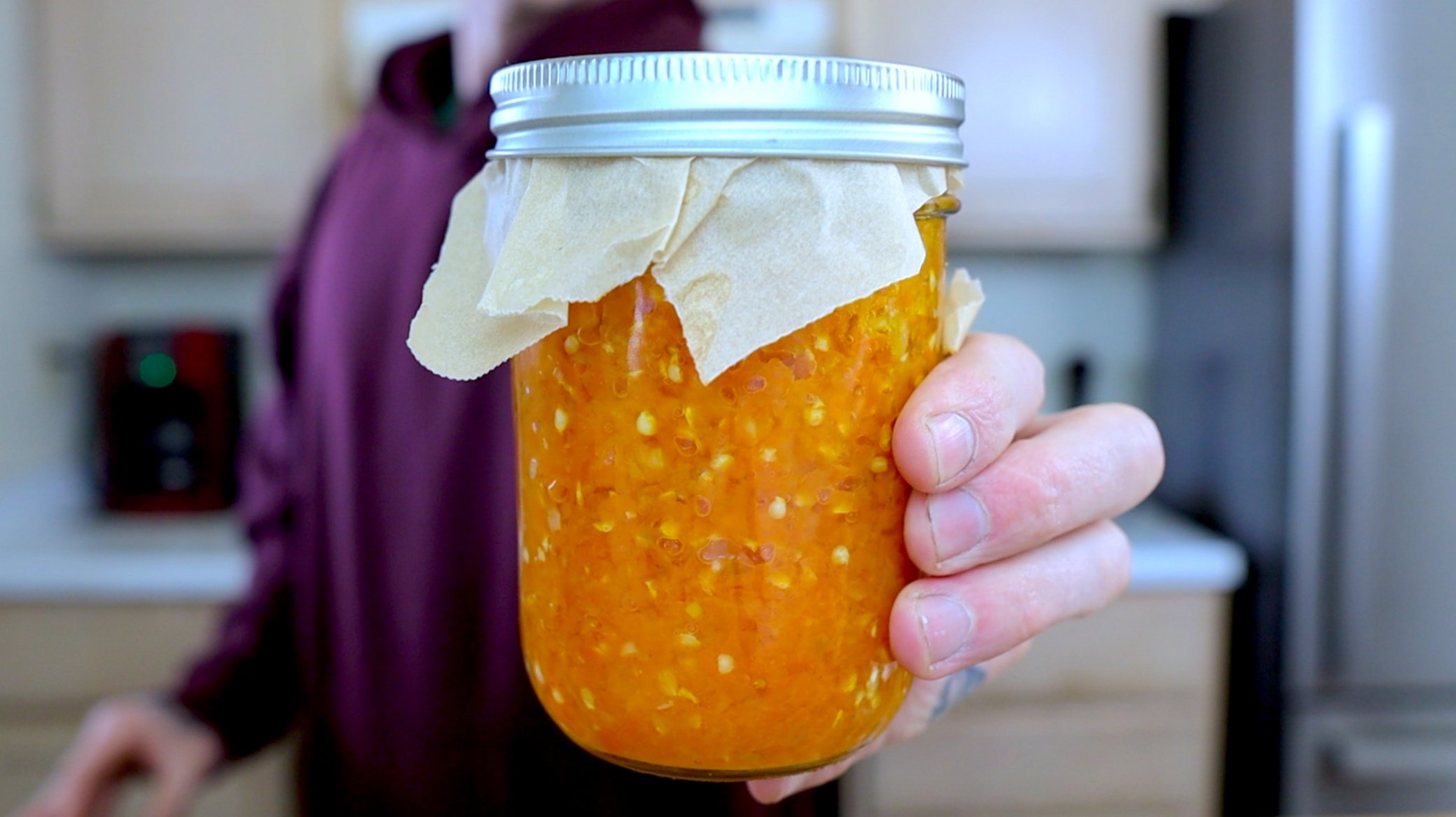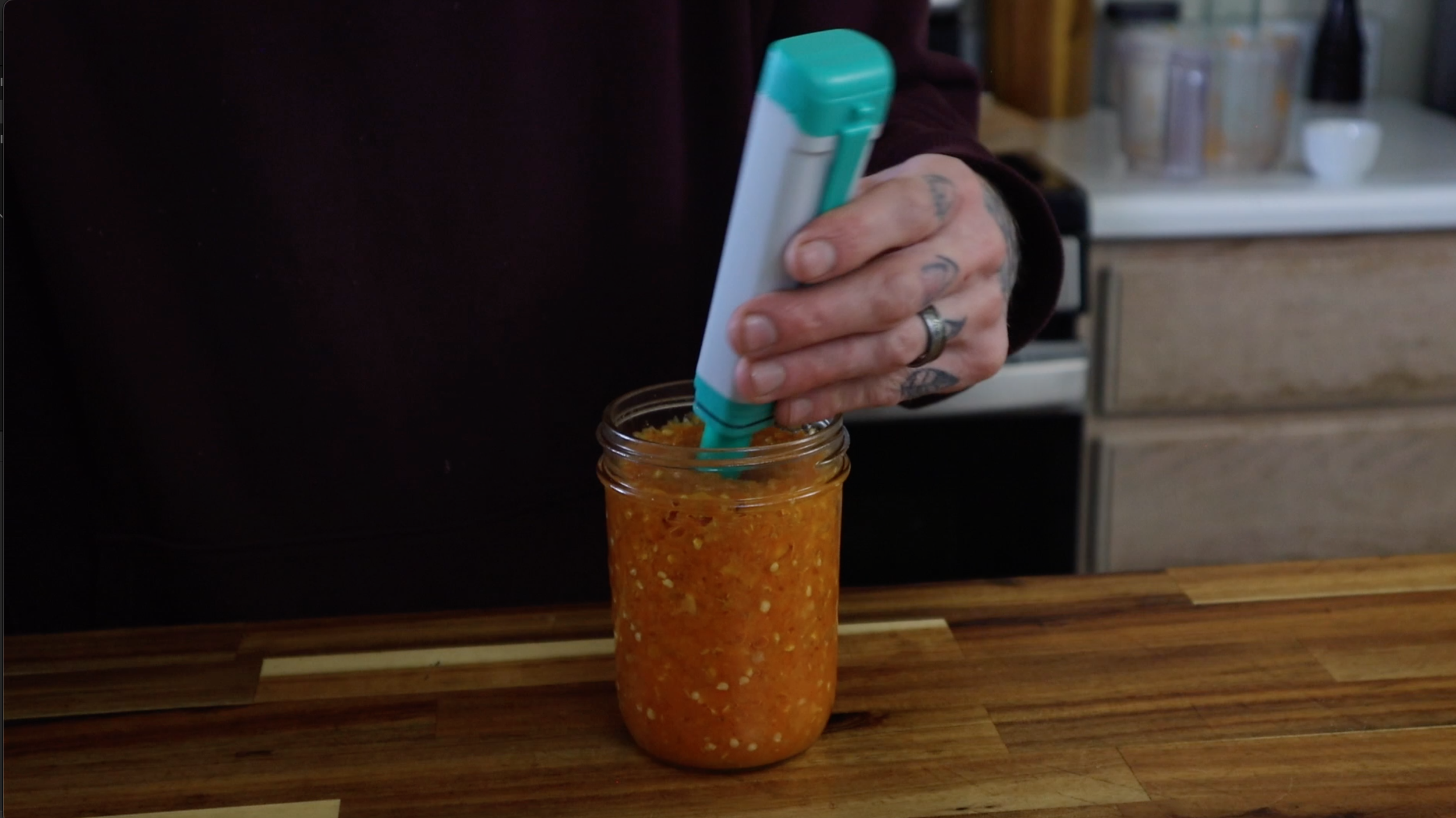How To Make Fermented Pepper Mash | Makes The BEST Hot Sauce!
So, how do you make fermented habanero pepper mash and why? Well, the reason is simple. To use up a lot of your freshly harvested peppers in a way that preserves them and you can make a delicious sauce with them for one. For the how, follow the procedure below.
Ingredients:
30-40 habanero peppers
2 orange bell peppers
5 cloves garlic
Fine sea salt 2% by weight
1/2 c raw apple cider vinegar
Tools needed:
Food Processor
Sharp knife
Cutting board
Mason jar
Parchment paper
Blender
Fine mesh strainer
Digital kitchen scale
Mixing bowl
Rubber spatula
Measuring cup
How to make it:
Wash and dry peppers. Remove the stems from the habanero peppers and cut in half. Cut the orange bell pepper into sections. Cut root ends off garlic and remove outer paper layer. Seed removal from the peppers is optional.
For the salt, I use fine sea salt with no additives, no preservatives, not anti caking agents and is not iodized. Using salt with no added stuff will give you the cleanest tasting sauce at the end.
Using food processor makes breaking down the ingredients quick.
Place peppers and garlic in food processor. Pulse a few times to break down the ingredients. Break the ingredients down so that the pieces are small. Hints the name pepper mash!
Set kitchen scale to grams. Place mixing bowl onto the scale, tare and add ingredients. Record the weight. Multiply by 2% to get the amount of salt needed for the pepper mash. In my example, the peppers weight was 626 g. 626 x .02 = 12.52. If your scale doesn’t read decimal points, round to the nearest whole number. In this example, I rounded to 13 g.
Place small dish on the scale and add the calculated amount of salt. Gently toss the salt with the pepper mash with the rubber spatula to evenly distribute the salt. Place the salted ingredients into a wide mouth mason jar. I was able to fit all the ingredients in a pint size mason jar.
Cut parchment paper into a circle. I used the lid from a mason jar as a stencil. Cut the parchment with a sharp knife. Add a square of parchment paper onto the opening of the jar and very lightly screw the lid on. Do not tighten as you want buildup pressure to be able to get released from the jar. Place the peppers in the pantry or countertop in your kitchen. Most importantly, this needs to be kept at room temperature away from direct sunlight. Let ferment for 1-3 months.
There should be small signs of the fermentation process starting. This will look like tiny bubbles starting to form. This is a good sign and that the lactobacillus is getting to work!
A pH meter is a great tool to have if you make fermented sauces frequently.
Once the fermentation period is done, check the pH of the mash. It should be less than 4.6 to be considered safe to consume. This also ensures the fermentation process was successful. The batch I did in the video was at 3.8 pH.
Place the whole jar of peppers with any juices that have accumulated into a blender. Add 1/2 c vinegar and blend for 1 minute or until completely smooth. I strain mine through a fine mesh strainer for an even smoother sauce.
Store the sauce in a glass jar or hot sauce bottles. Make sure to use a piece of parchment paper underneath the jar lid as the sauce’s acidity will eat away at the metal of the jar. I normally keep mine in the refrigerator, though it technically can be considered shelf stable with that low of a pH. This should stay good for many months, up to 1 year. That is, if you don’t use it much sooner!
Enjoy
Logan



